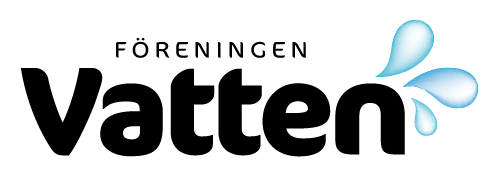KONTINUERLIGA VARNINGSSYSTEM FÖR FÖREKOMST AV NITRIFIKATIONSHÄMMANDE ÄMNEN I AVLOPP / Warning Systems for the Presence of Nitrification Inhibiting Compounds in Wastewater
The presence of compounds inhibitory to nitrification in sewage treatment is a severe problem when introducing biological nitrogen removal at municipal treatment plants. These compounds often have their origin in industrial wastewaters connected to the municipal sewage works. One way to decrease the risk for inhibition of the nitrifying microflora in the treatment plant is […]
ODLADE SVAMPARS OCH BAKTERIERS FÖRMÅGA ATT AKTIVERA DET PROFENOLOXIDAS-AKTIVERANDE SYSTEMET FRÅN KRÄFTORS BLODKROPPAR / The Ability of Fungi and Bacteria to Activate the Prophenoloxidase Activating System from Crayfish Blood Cells
The immune defence of arthropods is specifically and efficiently turned on after infection with fungi or bacteria. Different proteins in the blood of the animal are activated by the addition of cell wall polysaccharides from these microorganisms, and the activation can be studied in vitro with commercial substrates that form coloured products after enzymatic reaction […]
IMPACT OF OVERFLOWS ON ACID-BASE CHEMISTRY IN LIMED LAKES
During the winter ice-cover an inverse thermal stratification arises in dimictic lakes because cold surface water overlays the warmer and deeper lake water owing to differences in density. This condition can create so-called overflows in lakes, with the result that cold inflow water will only mix with the surface water immediately below the ice-cover. Changes […]
KALKNINGSPLANERING I VATTENDRAGSSYSTEM MED PULS-MODELLEN / Planning of Liming Activities in Rivers with the PULSE-model
A hydrochemical model (PULSE) has been used to simulate liming activities in Ljustorpsån, a tributary to river Indalsälven in central Sweden. The PULSE-model is a conceptual runoff model with possibilities to simulate some chemical variables, such as alkalinity and pH. The PULSE-model treats alkalinity as a function of the calculated groundwater level in the model. […]
TILLFÖRSEL AV NÄRSALTER TILL KUSTVATTEN – EN STUDIE AV TRANSPORT OCH RETENTION I VADSBÄCKEN, ÖSTERGÖTLAND / Diffuse Pollution of Coastal Waters – a Study of Nutrient Transport and Retention in a Small Watershed of Southern Sweden
Transport and retention of nitrogen and phosphorus was studied in a small (51 km2), agricultural watershed in southern Sweden. The article deals predominantly with: – comparison of different methods for nutrient transport calculation; – estimation of nutrient retention in a meandering part of the stream; – analysis of two similar tributaries with different nutrient transport. […]
FÖRSLAG TILL FRAMTIDA MILJÖÖVERVAKNING AV MARK, GRUNDVATTEN SAMT SJÖAR OCH VATTENDRAG / Proposed Future Monitoring of Soil, Ground- and Freshwater
The Swedish Environmental Protection Agency has been commissioned by the Swedish Government to evaluate the present and propose a new environmental monitoring and assessment programme for Sweden. Decisions on the new national monitoring programme will be taken in February 1993 and decisions on the regional programmes later in the spring. The aims of the proposed […]
DAGENS SAMORDNADE RECIPIENTKONTROLL – BRA ELLER DÅLIG? / Regional Freshwater Monitoring Programmes in Sweden – Present Quality?
The Center for Environmental Monitoring at the Swedish University of Agricultural Sciences has on commission by the Swedish Environmental Protection Agency (SEPA), and as a part of the current inspection of national and regional environmental monitoring programmes, evaluated the regional freshwater monitoring programmes supervised by the County Administrations in Sweden. The task has been to […]
KOMBINERAD BIOLOGISK FOSFOR- OCH KVÄVEAVSKILJNING STUDIUM AV DYNAMIKEN I DE OLUFTADE REAKTORERNA / Combined Biological Phosphorus and Nitrogen Removal – Study of the Dynamics in the Unaerated Reactors
To be able to use the available volumes as effectively as possible in a process for combined biological phosphorus and nitrogen removal, knowledge about the variations during the day and the week is needed. This work is a comparison between the behaviour in the unaerated reactors during a typical wednesday (high COD/TKN ratio) and a […]
A STUDY OF A PERCOLATION BASIN IN COLD CLIMATE
Infiltration facilities have become more common during recent years due to problems associated with the conventional storm watersystems, such as overflows and the release of pollutants into receiving waters. In northern Sweden, stormwater pipes and manholes have often been damaged by frost heave and ice formations, resulting in overflows during the snow melt period. In […]
FILTERMASSOR FÖR BEHANDLING AV SURA BRUNNSVATTEN / Filter Materials for the Neutralization of Acidic Wellwate
Private water-supply wells, fed by acidic groundwater, commonly have problems with corrosion of household connections. To control these problems the water can be treated in filter units containing calcerous materials. At the Department of Sanitary Engineering, Chalmers University of Technology, filter materials for neutralisation have been investigated. The materials tested were crushed limestone (CaCO3) and […]
